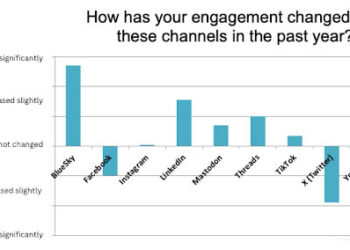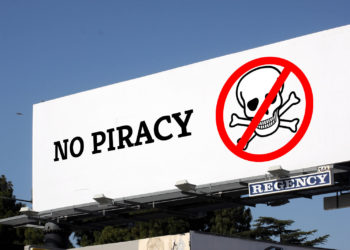
- Image by steveb_ohio via Flickr
Here at the O’Reilly Tools for Change meeting in Frankfurt, Matt McCalister, standing in for an ill Simon Waldman, did an excellent job talking about the Guardian newspaper’s creative and somewhat radical approach (radical because they’re really doing it) to the modern news organization.
Matt started by talking about the elements we were good at in an industrial model — creation, fabrication, distribution, and monetization of materials we’d pitch over the wall in a hit-or-miss fashion.
Digital keeps all of these metaphors for what we do, but changes them — creation is digital, fabrication is XML and metadata, distribution is aggregation and mobile, and monetization is advertising and deals.
Digital disrupts mass media and mass advertising, and mass media can’t bolt on solutions to the problem. In fact, mass media might not even understand the problem we’re trying to solve.
By the way, this must be the Douglas Adams meeting. Every speaker so far has mentioned or quoted Douglas Adams. Sure, it’s the 30th anniversary of “The Hitchhiker’s Guide to the Galaxy,” and I love the books, radio program, and film, but this seems planned. Oh well. I won’t panic.
Back to Matt McAlister’s nice talk. He mentioned that, as far as the Guardian is concerned, bi-directionality is the root of the disruption of mass media. Everyone has their own amplification network. It’s the read-write web.
Mutualization is a term that looks better with the British spelling (mutualisation), and the Guardian crowd sure have elaborated on what it means to them. It’s core to a lot of thinking at the Guardian and informs their goal of relevance.
A lot of McAlister’s talk reminded me of what Clay Shirky said, with “media becoming a site of coordination instead of a source of information.” The Guardian seems to typify that approach through the transparency they’re achieving through their Open Platform.
The Guardian Open Platform and its content APIs and data store availability has created a playground for developers, readers, users, developers who are readers, readers who are developers, users who are readers.
At the Guardian, they use Google Spreadsheets to capture data in their data store so that it’s available to readers in a familiar format and developer-friendly. They let users build things with the material on the Guardian. Their data are available for visualizations, applications, data slices, and user-driven research.
The Parliament in the UK was so impressed that they recently launched data.gov.uk started, and stated they were inspired by the Guardian Open Platform
So now the metaphors have shifted in a mutualized manner, to co-creation, co-fabrication, co-distribution, and co-monetization.
McAlister talked about many scandals that were investigated through a mutualized approach, including the police beating of a protester that led to his death, was denied by authorities, but was captured by a citizen’s video camera and unearthed by a reporter’s call for materials about the suspicious death. McAlister noted that the citizen only came forward because the journalist was trusted to do the right thing with the video, showing how mutualized this is. In another example, McAlister talked about the Parliamentary expense scandal and how the scope of it was crowdsourced thanks to an application built by the Guardian and put across its data store. This allowed data sharing amidst crowds who could analyze and study it.
Other memorable items from the presentation:
- The Guardian added game-like features, rankings, etc., to drive interest and competitiveness in applications.
- “You can now build working software in less time than it takes to have a meeting to describe it.”
- The Guardian used Django, took one week to deploy (social game, data store, styled, thousands of documents, etc.).
- One site created artist pages with Guardian news providing some content, profiles of artists, photo feeds, etc. Took about 3 hours to develop feeds for these pages, and they provide plenty of hits for the work required.
- They partnered with some sports fan sites, providing Guardian sports coverage. They’re doing similar thing for ecological sites, auto sites, and others. These sites monetize Guardian content as they monetize their own traffic and content.
There were fascinating data presentations and dives dealing with geographic, demographic, and psychographic slices showing trending and local interest as well.
The Guardian has an application gallery you might want to take a look at for inspiration.
The Guardian has also take co-monetization further by building the Guardian Green Ad Network.
Operationalizing this requires attention to speed, scale, and planning around news events. Load, interactivity, transitory, social sharing, and scalability varies with type of event. Scaling isn’t just about adding servers, caching, or other approaches. At the Guardian, they know you must pick the right tool for the job. Lead-time to order new hardware too long, getting it up and running and load-balanced takes too long. Need a spread of things, a variety. In the news, there’s a huge missed-opportunity cost.
Based on this, I think the Guardian has little to worry about in that realm. Are you other news organizations listening?
Discussion
5 Thoughts on "Metaphors of News at “The Guardian”"
Of course the Guardian has always been one of the lowest circulation newspapers in the UK but with a good revenue model. And it is owned by an educational charity. Interesting things to ponder in terms of what drives their business.
It’s not owned by an educational charity as far as I’m aware. Think it’s owned by a trust that has nothing to do with education
![Reblog this post [with Zemanta]](http://img.zemanta.com/reblog_e.png?x-id=cfc537d5-b4f2-407c-b785-b917f374766f)


